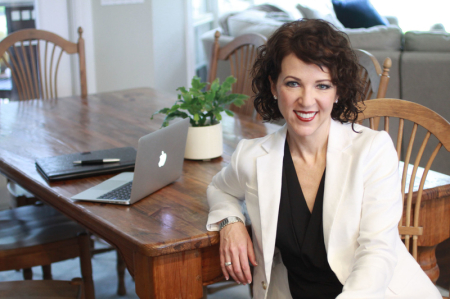Church leadership: How churches can maximize 'untapped potential' of women

As a 20-year veteran in ministry, leadership and people development, Kadi Cole was used to being the lone woman among large groups of male leaders.
But in recent years, she started to notice something unusual was happening: “Male leaders started seeking me out, asking me what it’s like to be a female in leadership and how they can help women in their congregations grow,” she told The Christian Post. “It just kept happening, and I started to realize that this conversation about women leading in their church at various different levels is really starting to shift.”
However, after speaking with the women these men were trying to develop, Cole discovered there was a significant disconnect between what was expressed by male leadership and how things were done in practice.
“The women either got the wrong message from men, or they misunderstood what these guys were trying to do,” she said. “And I just started to realize that there is this big gap between leadership teams wanting to grow women on their teams and what women are experiencing on that actual team.”
“In that space, I just felt like there was so much untapped potential. I believe that if we can figure out how to help those two groups find one another and have a common language, then we can really start to see some better leadership momentum at our local churches.”
In her forthcoming book, Developing Female Leaders: Navigate the Minefields and Release the Potential of Women in Your Church, Cole identifies the roadblocks facing women and offers practical steps churches can take to facilitate the development of females as leaders.

Based on interviews and surveys of more than 1,000 women in key church and organizational roles, combined with recent research, Cole discovered that while women make up 61 percent of church congregations, less than 10 percent tend to be in any sort of leadership role.
There’s no question, she said, that women face a “stained glass ceiling” when it comes to church leadership. “Many times, women are left out of leadership development opportunities, or they’re just not included, noticed, or invited because men have historically always been in leadership," she said.
“Most people forget that it wasn't until 1920 that women were even allowed to vote. Women haven’t even been voting for a hundred years in our country. So that means my grandma didn't vote, and she's the woman who raised my mom, and then my mom raised me. Those are hard mentalities to shift in just one generation.”
But the larger problem at play, she said, is the “sticky floor” holding women back. “There are so many things inside of women that don’t allow them to succeed,” she explained. “Things like imposter syndrome, which is this idea that you kind of feel like you're a fake or a fraud, or these inner insecurities.”
“Women,” she added, “tend to hold back and wait to be noticed rather than be forward with what we can bring to the table."
Despite these obstacles, effectively leveraging the leadership gifts and abilities of women in the church isn’t impossible, Cole said. In her book, she offers eight easy-to-implement solutions to some of the barriers facing women in churches across the theological spectrum.
“The theology piece is an issue obviously, but it's not the main issue in my mind,” she said, referring to the debate between complementarian and egalitarian camps. “All across the board, we’re missing out on what women can bring to the table and really knowing how to develop and leverage their gifts in the mission to which God has called our churches."
The first step toward achieving lasting change is simply making an effort to understand one another better, Cole contended.
“We've all inherited biases about this topic, and none of us are immune,” she said. “What are the things that I can do as an individual to better understand women or any minority? Anytime we can lean into understanding another person's perspective, we're going to help move this conversation forward and we are going to become better leaders in the process.”
Second, Cole encouraged church leaders to seek out and recognize the skills and positive qualities of women in their congregations. “Women of all ages may not realize what they bring to the table, because traditionally, this is not the population that has leadership affirmed in them or recognized,” she said. “Many of them have grown up being told they shouldn't lead, and so there's a big barrier to overcome that.”
Finally, she advised church leadership to do a hard, analytical look at how they’re running their churches and examine the "black and white metrics."
“We need to ask, ‘How many women do we have participating? How many women do we have in membership? How many women do we have serving? How many women do we have in leadership at all levels?' We need to ask ourselves if we're OK with those ratios,” she said.
“Chances are, you have fewer women than you probably could use in those environments. Ask yourself, ‘What can we do to make that different? How do we make it better next year than it is this year?’”
Cole acknowledged that the #MeToo and #ChurchToo movements have pressured church leaders to take a closer look at the plight of women in the church. But the conversation is furthered even more, she said, by senior pastors whose daughters are facing challenges as they attempt to serve in the church.
“These young women have grown up with leadership classes since the fifth grade,” she said. “They’ve been leading student retreats at their church, and they've been interning at colleges, and now they reach 22 and they’re ready to jump in. They’re asking their dads, ‘Can I not actually lead anymore now that I’m an adult?'”
“This is causing pastors to take a closer look at the issue,” she said. “Again, not necessarily theology, but asking, ‘What’s causing her to question whether she can serve in the church?’ Anytime an issue becomes personal, we’re motivated to look at these unspoken or implicit biases that are built into our systems.”
Without women, Cole concluded, half of a church’s leadership capacity is missing. Yet she is optimistic about the future and encouraged by the positive steps so many churches have taken in the right direction.
“I think my own experience of being approached by male leaders because they want to do better at this is really an indication that the conversation is shifting,” she said. “I think the future looks bright for women and for everyone.”
To learn more about Developing Female Leaders: Navigate the Minefields and Release the Potential of Women in Your Church, click here.





















